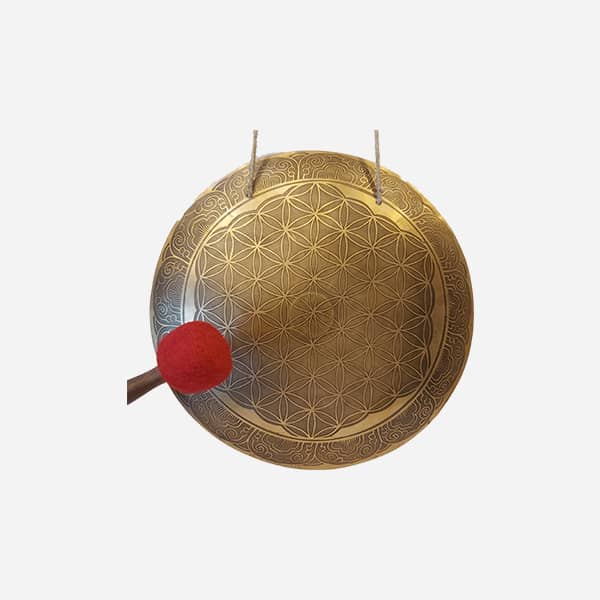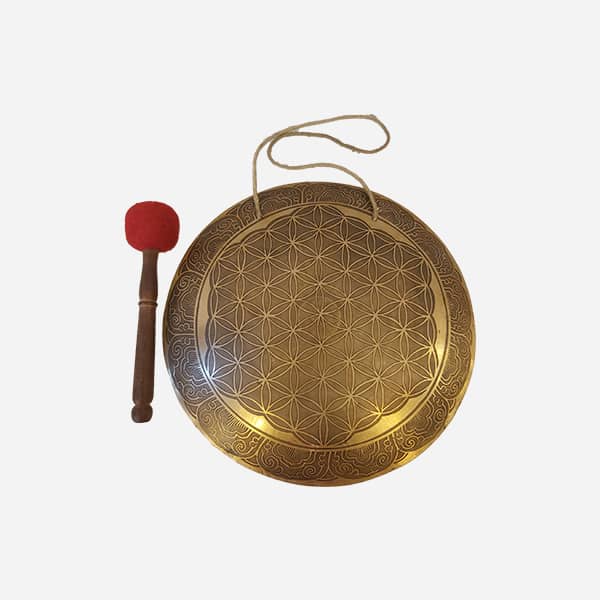Gong
$70.00
Actual Weight (KG): 1.29
Frequency G
http://singingbowlandstatue.com/wp-content/uploads/2022/10/G.666G.mp3Description
A gong is an East and Southeast Asian musical percussion instrument that takes the form of a flat, circular metal disc which is hit with a mallet.
The origin of gongs is probably China’s Western Regions in the sixth century. The term gong originated in the Indonesian island of Java. Scientific and archaeological research has established that Burma, China, Indonesia (Java) and Annam were the four main gong manufacturing centres of the ancient world. The gong found its way into the Western World in the 18th century when it was also used in the percussion section of a Western-style symphony orchestra.[citation needed] A form of bronze cauldron gong known as a resting bell was widely used in ancient Greece and Rome, for instance in the famous Oracle of Dodona, where disc gongs were also used.
Gongs broadly fall into one of three types: Suspended gongs are more or less flat, circular discs of metal suspended vertically by means of a cord passed through holes near to the top rim. Bossed or nipple gongs have a raised centre boss, or knob, and are often suspended and played horizontally. Bowl gongs are bowl-shaped and rest on cushions. The latter may be considered a member of the bell category. Gongs are made mainly from bronze or brass but there are many other alloys in use.
Gongs produce two distinct types of sound. A gong with a substantially flat surface vibrates in multiple modes, giving a “crash” rather than a tuned note. This category of gong is sometimes called a tam-tam to distinguish it from the bossed gongs that give a tuned note. In Indonesian gamelan ensembles, some bossed gongs are deliberately made to generate in addition a beat note in the range from about 1 to 5 Hz. The use of the term “gong” for both these types of instrument is common.
Additional information
| Weight | 5 kg |
|---|




